Pathobiological implications of the expression of EGFR, pAkt, NF-κB and MIC-1 in prostate cancer stem cells and their progenies
- PMID: 22384099
- PMCID: PMC3285632
- DOI: 10.1371/journal.pone.0031919
Pathobiological implications of the expression of EGFR, pAkt, NF-κB and MIC-1 in prostate cancer stem cells and their progenies
Abstract
The progression of prostate cancers (PCs) to locally invasive, androgen-independent and metastatic disease states is generally associated with treatment resistance and disease relapse. The present study was undertaken to establish the possibility of using a combination of specific oncogenic products, including epidermal growth factor receptor (EGFR), pAkt, nuclear factor-kappaB (NF-κB) and macrophage inhibitory cytokine-1 (MIC-1) as biomarkers and therapeutic targets for optimizing the management of patients with localized PC at earlier disease stages. The immunohistochemical and immunofluorescence data have revealed that the expression levels of EGFR, Ser(473)-pAkt, NF-κB p65 and MIC-1 proteins were significantly enhanced in the same subset of 76 cases of prostatic adenocarcinoma specimens during the disease progression and these biomarkers were expressed in a small subpopulation of CD133(+) PC cells and the bulk tumor mass of CD133(-) PC cells. Importantly, all of these biomarkers were also overexpressed in 80-100% of 30 PC metastasis bone tissue specimens. Moreover, the results have indicated that the EGF-EGFR signaling pathway can provide critical functions for the self-renewal of side population (SP) cells endowed with stem cell-like features from highly invasive WPE1-NB26 cells. Of therapeutic interest, the targeting of EGFR, pAkt, NF-κB or MIC-1 was also effective at suppressing the basal and EGF-promoted prostasphere formation by SP WPE1-NB26 cells, inducing disintegration of SP cell-derived prostaspheres and decreasing the viability of SP and non-SP WPE1-NB26 cell fractions. Also, the targeting of these oncogenic products induced the caspase-dependent apoptosis in chemoresistant SP WPE1-NB26 cells and enhanced their sensibility to the cytotoxic effects induced by docetaxel. These findings suggest that the combined use of EGFR, pAkt, NF-κB and/or MIC-1 may represent promising strategies for improving the accuracy of current diagnostic and prognostic methods and efficacy of treatments of PC patients in considering the disease heterogeneity, thereby preventing PC progression to metastatic and lethal disease states.
Conflict of interest statement
Figures


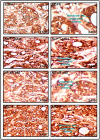
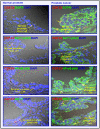
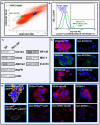
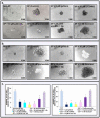

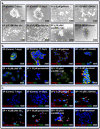

Similar articles
-
Cytotoxic effects induced by docetaxel, gefitinib, and cyclopamine on side population and nonside population cell fractions from human invasive prostate cancer cells.Mol Cancer Ther. 2010 Mar;9(3):617-30. doi: 10.1158/1535-7163.MCT-09-1013. Epub 2010 Feb 23. Mol Cancer Ther. 2010. PMID: 20179163 Free PMC article.
-
Marked improvement of cytotoxic effects induced by docetaxel on highly metastatic and androgen-independent prostate cancer cells by downregulating macrophage inhibitory cytokine-1.Br J Cancer. 2013 Mar 19;108(5):1079-91. doi: 10.1038/bjc.2012.484. Epub 2013 Feb 28. Br J Cancer. 2013. PMID: 23449353 Free PMC article.
-
Frequent gene products and molecular pathways altered in prostate cancer- and metastasis-initiating cells and their progenies and novel promising multitargeted therapies.Mol Med. 2011 Sep-Oct;17(9-10):949-64. doi: 10.2119/molmed.2011.00115. Epub 2011 May 20. Mol Med. 2011. PMID: 21607288 Free PMC article. Review.
-
Hierarchical clustering of immunohistochemical analysis of the activated ErbB/PI3K/Akt/NF-kappaB signalling pathway and prognostic significance in prostate cancer.Br J Cancer. 2010 Mar 30;102(7):1163-73. doi: 10.1038/sj.bjc.6605571. Epub 2010 Mar 9. Br J Cancer. 2010. PMID: 20216540 Free PMC article.
-
Animal models relevant to human prostate carcinogenesis underlining the critical implication of prostatic stem/progenitor cells.Biochim Biophys Acta. 2011 Aug;1816(1):25-37. doi: 10.1016/j.bbcan.2011.03.001. Epub 2011 Mar 17. Biochim Biophys Acta. 2011. PMID: 21396984 Free PMC article. Review.
Cited by
-
Development of animal models underlining mechanistic connections between prostate inflammation and cancer.World J Clin Oncol. 2013 Feb 10;4(1):4-13. doi: 10.5306/wjco.v4.i1.4. World J Clin Oncol. 2013. PMID: 23539141 Free PMC article.
-
Nanoways to overcome docetaxel resistance in prostate cancer.Drug Resist Updat. 2014 Apr;17(1-2):13-23. doi: 10.1016/j.drup.2014.04.001. Epub 2014 Apr 5. Drug Resist Updat. 2014. PMID: 24853766 Free PMC article. Review.
-
Altered gene products involved in the malignant reprogramming of cancer stem/progenitor cells and multitargeted therapies.Mol Aspects Med. 2014 Oct;39:3-32. doi: 10.1016/j.mam.2013.08.001. Epub 2013 Aug 29. Mol Aspects Med. 2014. PMID: 23994756 Free PMC article. Review.
-
Gastric stem cells and gastric cancer stem cells.Anat Cell Biol. 2013 Mar;46(1):8-18. doi: 10.5115/acb.2013.46.1.8. Epub 2013 Mar 25. Anat Cell Biol. 2013. PMID: 23560232 Free PMC article.
-
Epidermal Growth Factor Is Increased in Conjunctival Malignant Melanoma.In Vivo. 2021 Nov-Dec;35(6):3603-3612. doi: 10.21873/invivo.12666. In Vivo. 2021. PMID: 34697202 Free PMC article.
References
-
- Tannock IF, de Wit R, Berry WR, Horti J, Pluzanska A, et al. Docetaxel plus prednisone or mitoxantrone plus prednisone for advanced prostate cancer. N Engl J Med. 2004;351:1502–1512. - PubMed
-
- Petrylak DP, Tangen CM, Hussain MH, Lara PN, Jr, Jones JA, et al. Docetaxel and estramustine compared with mitoxantrone and prednisone for advanced refractory prostate cancer. N Engl J Med. 2004;351:1513–1520. - PubMed
-
- Jemal A, Siegel R, Xu J, Ward E. Cancer statistics, 2010. CA Cancer J Clin. 2010;60:277–300. - PubMed
-
- Mimeault M, Batra SK. Recent advances on multiple tumorigenic cascades involved in prostatic cancer progression and targeting therapies. Carcinogenesis. 2006;27:1–22. - PubMed
Publication types
MeSH terms
Substances
Grants and funding
LinkOut - more resources
Full Text Sources
Other Literature Sources
Medical
Molecular Biology Databases
Research Materials
Miscellaneous

